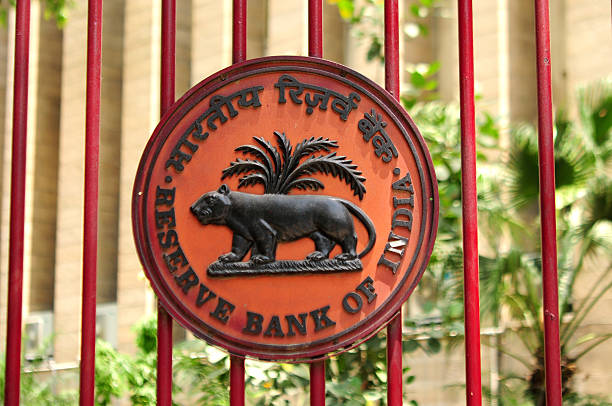NEWS
RBI moots bank-like norms for large NBFCs
RBI proposes 4-tier layer with intensity of regulation increasing based on size of NBFC; top 25-30 NBFCs to have bank-like prudential norms.
RBI proposes 4-tier layer with intensity of regulation increasing based on size of NBFC; top 25-30 NBFCs to have bank-like prudential norms.

India’s largest non-bank lending entities are set to come under regulations and capital requirements similar to banks. The Reserve Bank of India (RBI) is proposing the creation of a four-tier layer, with the intensity of regulation increasing based on the size of the NBFC. The NBFCs are becoming systemically critical with some of them growing bigger than the smaller commercial banks. Besides, majority of funding is also coming from banks and mutual funds, RBI said.
The overhaul of regulations will mean that the largest 25-30 NBFCs will be subjected to bank-like prudential norms.
Posting explosive growth in the last decade, the NBFCs have come under rough weather and some of the big scam-hit ones like IL&FS and Dewan Housing Finance Corporation have crumbled. Taking note of this, the RBI in November had hinted at a graded regulatory framework to balance between financial stability and space for innovation.
In a recent discussion paper released on 22 January, RBI recommended that NBFCs, which have become more interconnected with the financial system, should fall under four categories, depending on their size and relevance for better regulation. The four layers include — base, middle, upper and the top.
NBFCs with an asset size of up to Rs 1,000 crore will fall under the base layer. Constituting the largest share of NBFCs, these will have the least stringent regulation. According to the RBI, 9209 out of 9425 non-deposit taking NBFCs fall into this category.
Within five years, these NBFCs will have to raise entry-level “net owned funds” to Rs 20 crore from Rs 2 crore. The non-performing asset (NPA) classification norm will be brought down from 180 days to 90 days.
The middle layer will be exposed to lease regulatory changes but have tighter corporate governance norms. This segment will include all non-deposit taking NBFCs classified currently as 'systemically important' and all deposit taking NBFCs. Housing Finance Companies, Infrastructure Finance Companies, Infrastructure Debt Funds, Core Investment Companies and Standalone Primary Dealers will also fall into this category.
The capital-to-risk-assets ratio (CRAR) of 15% with minimum Tier-I ratio of 10% will stay for middle layer NBFCs. Lending and investment can be merged into a single exposure limit of 25% for single borrower and 40% for group of borrowers anchored to the NBFC’s Tier 1 capital.
The 25 to 30 NBFCs making up the upper layer will be identified as systemically significant and will move towards bank-like regulations.
This category will be introduced to the concept of Core Equity Tier-1, set at 9%. Ceiling for leverage and differential standard asset provisioning will be prescribed. Currently, NBFCs maintain standard asset provisioning of 0.4%.
NBFCs in this category will be subject to mandatory listing requirement, the RBI proposed.
The top layer, empty for now, will have NBFCs where the RBI may see elevated systemic risk. They will be like the ‘prompt corrective action’ category used for banks.Explosive balance sheet growth of NBFCs in last decade
Over the last decade, NBFCs have witnessed phenomenal growth. Constituting 12% of the balance sheet size of banks in 2010, they are now more than a quarter of the size of banks.“While the development of a robust non-bank intermediation channel provides a good ‘spare tyre’ to the economy, unbridled growth fueled by lighter regulatory framework can also lead to potential systemic risks,” RBI cautioned in the discussion paper.
The NBFC sector has seen tremendous growth in recent years. In last five years alone, the size of balance sheet of NBFCs (including HFCs) has more than doubled from Rs 20.72 lakh crore (2015) to Rs 49.22 lakh crore (2020).
According to the discussion paper, NBFCs were the largest net borrowers of funds from the financial system, with gross payables of Rs 9.37 lakh crore and gross receivables of Rs 0.93 lakh crore, as of end-September 2020. They obtained more than half of their funding from scheduled commercial banks (SCBs), followed by AMC-MFs (Mutual Funds) and insurance companies. HFCs were the second largest borrowers of funds from the financial system, with gross payables of around Rs 6.20 lakh crore and gross receivables of Rs 0.53 lakh crore as on end-September 2020.
Currently, NBFCs are subject to guidelines on corporate governance with regard to ‘fit and proper’ criteria for directors; formation of Audit, Nomination and Risk Management Committees; rotation of partners of audit firm; disclosure requirements and appointment of chief risk officer.
“However, coverage of corporate governance requirements for banks is wider in terms of instructions on compensation policy for WTD/ CEOs/ Risk Control Staff, ‘fit and proper’ criteria for promoters, prohibition on a person being a director in more than one bank, etc. Further, most public sector and private sector banks are listed and are, therefore, required to follow listing obligations having a bearing on corporate governance,” the RBI discussion paper said.
RBI will move towards streamlining the prudential norms in line with the banks and also facilitate NBFCs to migrate to becoming banks, like in the case of capital First which merged with IDFC Bank to form IDFC First Bank.
Stakeholders can send their comments on the discussion paper to the RBI within a month.
